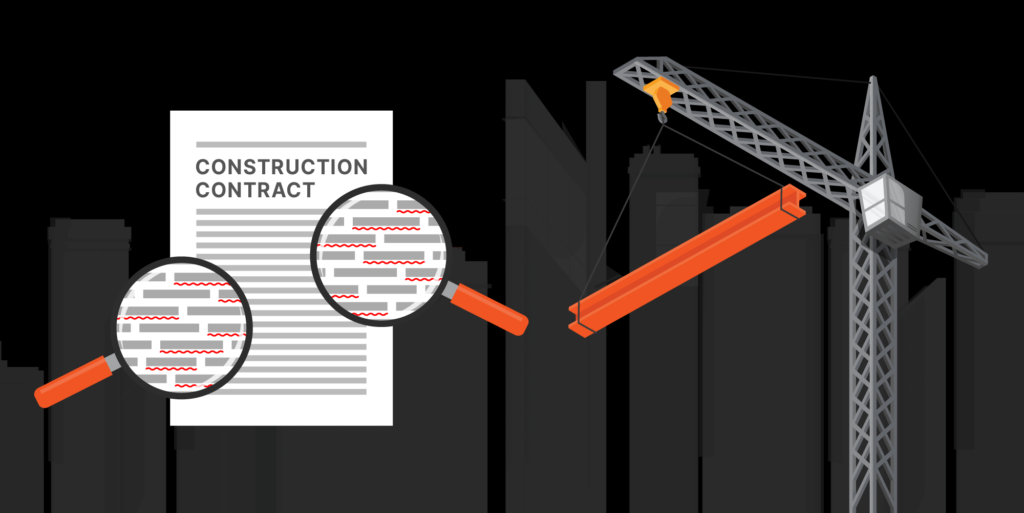— 5 min read
Understanding Supplementary Conditions on Construction Contracts
Last Updated Feb 3, 2025
Last Updated Feb 3, 2025

No two construction projects are exactly alike — and the same goes for construction contracts. Even when using a standard contract form, owners and contractors sometimes use supplementary conditions to shape the contract documents to fit the project at hand better.
Supplementary conditions may add additional information that isn’t included in standard contract terms, alter the existing terms or clarify stakeholder roles for the coming project. For instance, supplementary conditions may be used to name a general contractor as the prime contractor for the project.
Tailoring the contract to the specific scope, location or regulatory environment helps to manage and assign risk, designate responsibilities and outline expectations for the work ahead, creating the right conditions for a smooth and successful project.
Table of contents
What are supplementary conditions?
Supplementary conditions are additional provisions that add, delete or change the base contract documents. The rules included in the supplementary conditions overrule the conditions and terms in the original contract documents.
Supplementary conditions are there to alter the original contract document in a way that can’t be achieved through project specifications. This customization allows for an adjustment of risk allocation, and can add or remove constraints that may vary based on the project’s location or scope.
Reasons for Including Supplementary Conditions
When done right, these alterations add clarity, tailor the terms to unique project circumstances and help maintain fairness between stakeholders. Supplementary conditions should always maintain industry best practices.
Examples of necessary or fair supplementary conditions include:
- A requirement for specific additional documentation to be included in pay applications
- Altering the schedule of payments to align with project milestones or cash flow needs
- A change to insurance requirements because of specific project risks
- Adding specific safety protocols, reflecting particular site hazards or client standards
By incorporating these kinds of supplementary conditions, the contract may better address all aspects of the project, which can help minimize risks and improve performance.
Common Problems with Supplemental Conditions
Standard construction contracts by the American Institute of Architects (AIA) and other bodies have been structured to achieve a balance of fairness between construction stakeholders. While supplementary conditions may be necessary to tailor the documents to individual circumstances, owners and contractors have to watch for conditions that tip the balance towards one of the parties.
In some cases, the contract might include requirements or elements of the scope that were not discussed in the bid package. Other times, owners use supplementary conditions across all of their project documents rather than in unique and tailored cases, using them to transfer as much of the risk as possible to the contractor. Contractors should watch for terms and conditions that have been added or taken away without a full exploration of the impacts on the rest of the contract language or without a discussion of which rule takes precedence.
For instance, an owner can add additional rights or obligations into the contract without explaining how they will be enforced — such as a clause that stipulates that the contractor must "ensure the highest quality of workmanship at all times."
Without defining specific quality standards or outlining procedures for quality assessment and enforcement, this vague obligation places an open-ended burden on the contractor, as it lacks measurable criteria or a clear process for determining compliance. Because of its vagueness, the clause can lead to misunderstandings and disputes.
Inappropriate use of supplementary conditions might include:
- Overly burdensome requirements, like requiring repetitive or unnecessary documentation
- Provisions that conflict with other areas of the contract, which could lead to confusion and disputes
- Clauses that impose conditions that will violate local laws or regulations
- Clauses that put too much risk on one of the parties or favor one over the other by too much
Watch for Deletions and Additions
Sometimes, clauses that are deleted from standard contracts can have a big impact on the relationships and responsibilities of stakeholders. Contractors should watch carefully for sections that should be in the contract but aren’t.
For example, consider what happens when the owner takes out a clause that limits contractor liability for delays caused by unforeseen weather conditions. Standard construction contracts often include "force majeure" clauses that protect contractors from penalties or damages in cases where delays are due to events beyond their control, such as extreme weather.
If this clause is deleted, the contractor might be held liable for delays caused by unpredictable weather, facing financial penalties or even termination of the contract.
Stay updated on what’s happening in construction.
Subscribe to Blueprint, Procore’s free construction newsletter, to get content from industry experts delivered straight to your inbox.

Seeking Clarity with Supplementary Conditions
If a contractor is unsure of a contract’s fairness, completeness or compliance with legal requirements, they should seek outside help before signing it. The contractor can ask questions from the ownership team that worked to put together the contract, seek legal advice from a lawyer who’s well-versed in construction contracts, or contact construction associations, which can offer resources or suggest experts who can offer insights into the contract.
Supplementary conditions offer owners and contractors the opportunity to use standard form contracts to save time and money in contract administration, while also adding in specific provisions for unique characteristics of the project or the stakeholders. Contractors need to be wary of added, deleted or altered terms that can transfer too much of the risk their way or put arduous conditions on payments or timelines.
Winning a bid for a big job is an exciting opportunity for any general contractor, but construction teams should take care to review the contract for fairness, balance and adherence to legal requirements.
Was this article helpful?
Thank you for your submission.
0%
0%
You voted that this article was . Was this a mistake? If so, change your vote here.
Scroll less, learn more about construction.
Subscribe to The Blueprint, Procore’s construction newsletter, to get content from industry experts delivered straight to your inbox.
By clicking this button, you agree to our Privacy Notice and Terms of Service.
Categories:
Tags:
Written by
Kristen Frisa
71 articles
Kristen Frisa is a contributing writer for Procore. She also contributes to a variety of industry publications as a freelance writer focused on finance and construction technology. Kristen holds a Bachelor of Arts in Philosophy and History from Western University, with a post-graduate certificate in journalism from Sheridan College. She lives in Ontario, Canada.
View profileExplore more helpful resources

A Straightforward Guide to Construction Contract Review
Construction contracts are like the glue for the project team. They’re the ties that bind the working relationships and goals for the project, containing information about responsibilities, liabilities and processes...

Escalation Clauses in Construction Contracts: When and How They Apply
In construction contracts, an escalation clause allows for the escalation of a certain price for labor or materials to be used in a construction project. This type of clause is most...

Scope Gap: Addressing Ambiguous Project Requirements
To turn contract documents into an actual building, every construction project requires stakeholders to complete certain items of work. Ideally, the scope of work outlines those items and clarifies who’s...

Who’s Accountable? The Spearin Doctrine and Construction Responsibilities
Contractors and subcontractors are expected to follow the instructions in their contracts, but sometimes, these instructions can have mistakes or gaps. When this happens, it’s often unclear who should be...